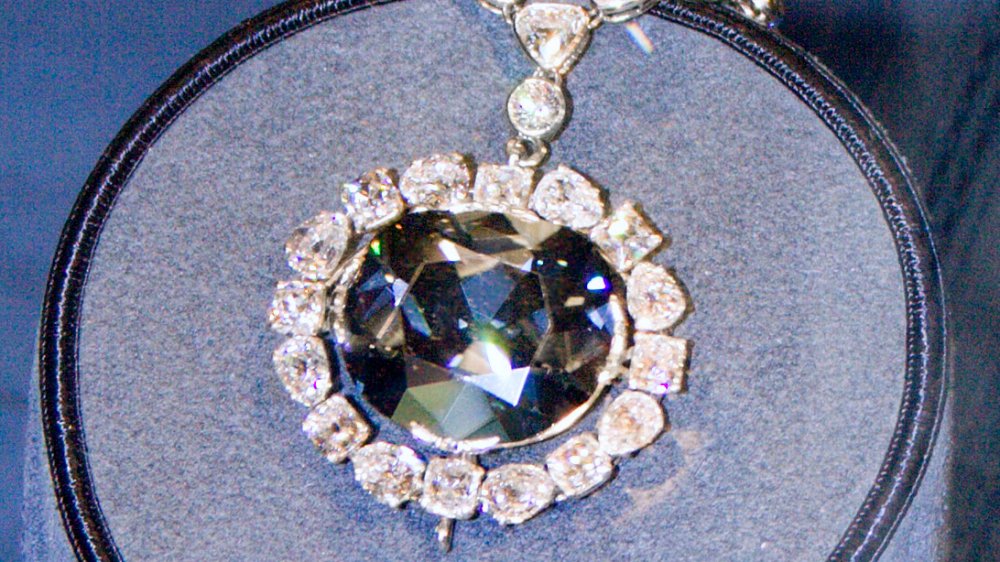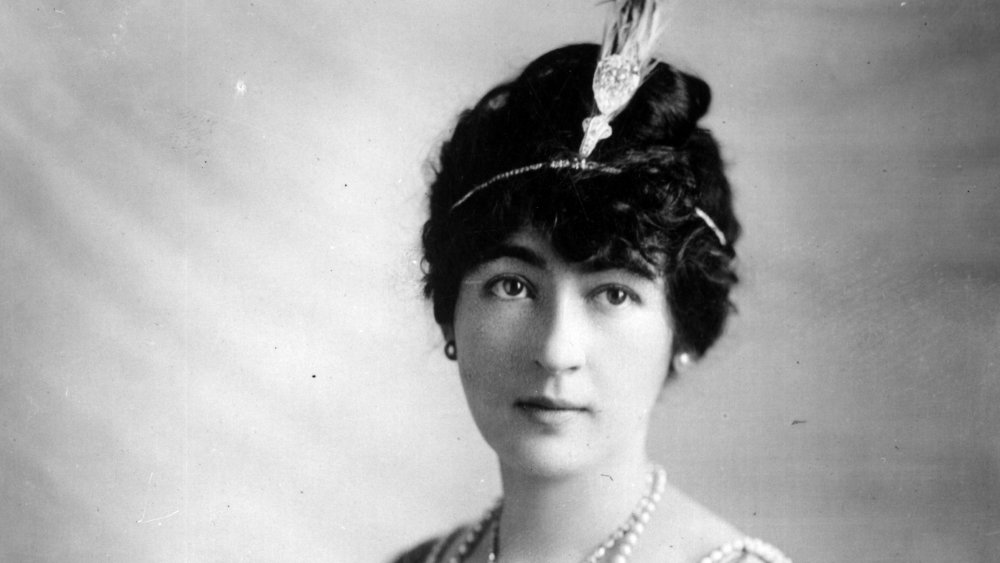What You Need To Know About The Hope Diamond's Curse
One of the most famous jewels in the world is the Hope Diamond. While most people think the Hope Diamond is the same one in Titanic, it's not — it's actually famous in its own right, primarily because of a supposed curse that befalls those who dare own it.
The Hope Diamond, which possesses a blue color that renders it one of the rarest gems in the world, is currently housed in Washington D.C.'s National Museum of Natural History. The diamond has changed hands several times, but the first owner was the French merchant Jean-Baptiste Tavernier, as the museum's official website explains, who probably bought it in India. Tavernier then sold the so-called "Tavernier Blue" to King Louis XIV of France around 1668, who then recut the stone into a heart shape. When the French monarchy fell, the diamond was stolen, and somehow ended up in England. Rumors that King George IV possessed it went around, but the first Englishman to actually claim ownership was the banker Henry Philip Hope, giving the jewel its current name.
This is where most people track the curse's beginnings. According to Mental Floss, Tavernier was reportedly torn apart by wolves (though some documents show he lived until his eighties). King Louis XIV, one of the longest-reigning monarchs in Europe, saw most of his children die, and his grandson Louis XVI and Marie Antoinette were beheaded during the French Revolution. People speculated that this bad luck must have been caused by a curse.
So many people had bad luck because of it
It wasn't just the French who suffered from the curse. The Daily Beast writes that jewel broker Simon Moancharides, who also briefly owned the stone, drove his car off a cliff, soon after selling it. The socialite Evalyn Walsh McLean was next. While she had the Hope Diamond, her mother-in-law died, she lost her son, her husband left her, her daughter died of a drug overdose, and she lost her fortune and needed to sell her prized jewel. According to the Washington Post, the diamond was then sold to Harry Winston. He donated it to the National Museum of Natural History, but even the mailman who delivered the stone to the museum allegedly crushed his leg in an accident.
People claimed Tavernier triggered the curse because he stole the diamond from a Hindu statue. However, there's no record of Tavernier stealing it from anywhere. Modern researchers now believe that brokers created the curse to drum up interest in the Hope Diamond, per Live Science. There's even a rumor that Cartier, who helped recut the stone, made Walsh believe the curse to market it. The theory, then, is that all the misfortune is just coincidence. After all, it wasn't uncommon in the 1600s for parents to outlive their children ... and well, the French Revolution? That was always going to happen.
So no, there probably isn't a curse attached to the Hope Diamond. But to be safe, just know that it's the Smithsonian Institute, who manages the natural history museum, now owns the rock and they're doing okay. So far.

